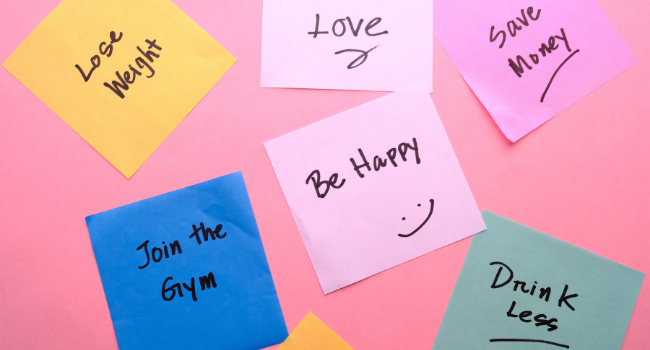Do You Have Decision Fatigue? Here’s What It Is and How to Prevent It
Standing in the grocery store at the end of a long day, it’s not usual for me to feel irritated and indecisive. The question that puts me over the edge: “What’s for dinner?”
I’ll do anything I can to divert that monumental question to my husband. Ask him to run to the store, or text to see what he’s in the mood to eat, or what I should grab. Anything so that I don’t have to face a decision that doesn’t just impact me, but everyone in the family (who all have their own strong opinions on what should or should not be served).
Why is it that I can function all day, juggling work, kids, and home, but some days the thought of dinner feels like too much?
The answer is decision fatigue, and if you’ve ever found yourself stressed, frozen, irritable, or just plain exhausted at the thought of making a decision, you’ve faced it too.
What is Decision Fatigue?
Decision fatigue is defined as “difficulty in making a good decision experienced as a result of the number of decisions one needs to make.” The more decisions you make in a day, the harder it can be to make those decisions. Your brain has a limit and if you surpass that limit you can begin to feel the effects.
We make a crazy amount of decisions each day. It is estimated that the average adult makes 35,000 decisions in a day, according to Dr. Joel Hoomans, an Assistant Professor of Management and Leadership Studies at Roberts Wesleyan College. From the mundane—what should I wear or eat for breakfast, to the complex—planning a work project, or deciding where to enroll your child for school next year.
What makes understanding decision fatigue difficult is the limit of decisions you can handle in a day is not set and can vary. Factors that can influence your rate of decision fatigue include how rested you are, the food you’ve eaten, the amount of stress you are facing, and how much you are trying to handle on any given day (while multi-tasking may feel necessary at times, it is can be very draining for your brain). Individuals struggling with ADHD, depression, or anxiety can also experience heightened levels of decision fatigue.
Making a decision involves multiple networks in your brain working together. The networks involved in making a decision are the same ones that contribute to your executive functions. These functions are the high-level brain functions that dictate your ability to sustain focus, override impulses, think, learn, plan, and make decisions. High-level functions of the brain also require high amounts of fuel to support their actions. This means the more you’ve done in a day involving your mental capacities, the less fuel you’ll have remaining to support thinking and making decisions.
If you struggle with challenges related to ADHD, anxiety, or depression you may be more likely to find yourself facing decision fatigue.
Here's How to Prevent Decision Fatigue
Next time you find yourself stuck when facing a decision, remember this—decision fatigue is your brain’s way of communicating with you. Your brain is telling you that you’ve reached your limit. To push past this limit successfully your brain needs extra support! If you’re able to, press pause on your decision and take time to implement one of the following energizing strategies first:
Rest - a quick nap, mindfulness meditation, or a good night’s sleep can go a long way in providing your brain a chance to recharge
Eat - a high protein snack that includes healthy fats such as avocado is a quick way to provide more fuel to your brain
Exercise - 20-30 minutes of exercise that engages your muscles and spikes your heart rate can help to increase your ability to focus after exercising
Switch gears - if something is causing you stress, taking time to set it aside to engage in something enjoyable, like time spent outside, can help you come back to face the challenge feeling more refreshed
Connect with a friend or family member. Taking a few extra minutes out of your day to connect with someone you care about can help to recharge your mood and energy!
Thoughtful planning can help to reduce your frequency of decision fatigue:
Use the weekend to plan outfits and meals for the week, to reduce the number of decisions you need to make during your work week
Make your biggest decisions first thing in the day, when you are rested and fresh
Create habits and routines whenever possible to minimize the little decisions (do your grocery shopping first thing Saturday morning so you don’t need to decide that week when to go)
Create to-do lists that include days and deadlines to minimize procrastination (which creates more decision fatigue due to stress and a backlog of decisions!)
Don't Make Decision Fatigue a Family Habit
If you’re a parent, keep in mind that decision fatigue is just as real for our kids as it is for us! Our kids also face days full of demands and stressful decisions. Next time your child melts down when you ask what they want for dinner, know their brain is showing you they’ve had enough for one day! Implementing the same strategies that help you, can help support your child’s needs as well.
We can’t make the stresses and challenges in life go away, but we can work to be better prepared. Knowing how to identify your threshold for decision fatigue and what to do when the moment strikes will hopefully set you up for success in your 35,000 decisions tomorrow.
Weekends are a great time to address decisions such as meals and outfits for the week, reducing the number of decisions you make during your work days.
Save the big decisions for times when you are fresh and focused - first thing in the morning, or after you've eaten or exercised are great times to tackle the more challenging decisions, or longer lists!
Dr. Rebecca Jackson is currently the VP of Programs and Outcomes for Brain Balance, where she designs and implements programs focused on strengthening the brain to optimize human performance for a variety of ages and abilities. She has been featured on national media outlets, including ABC’s The Doctors Show, NBC Nightly News with Lester Holt, Forbes, Business Insider, TODAY, Huffington Post and more.
Read More









